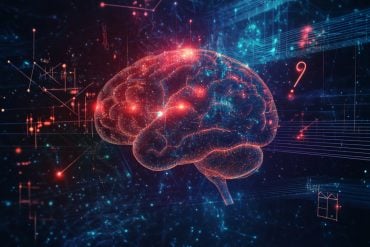Summary: Recent findings reveal an important insight into the social struggles of deaf individuals: it’s the environment, not their brains, that poses challenges.
This research debunked the myth that hearing impairment alters the brain’s social circuits. By comparing neuroimaging studies of deaf and hearing participants during social tasks, it was found that both groups use the same brain regions.
However, deaf individuals rely more on areas linked to visual cues like signing and lip reading.
Key Facts:
- Deafness doesn’t affect the brain mechanisms supporting social skills.
- Both deaf and hearing individuals use the same brain regions during social tasks.
- Deaf individuals show enhanced activation in areas for processing visual social cues.
Source: Wiley
Hearing impairment may cause difficulties in social interactions, but new research indicates that social struggles experienced by deaf individuals are likely not due to brain alterations but rather due to non-supportive environments.
The findings, which are published in Human Brain Mapping, suggest that deafness does not affect the mechanisms and brain circuits supporting social skills.

For the research, investigators analyzed published neuroimaging studies focusing on social perception in deaf versus hearing participants.
Results indicated that both deaf and hearing participants recruited the same brain regions when performing different social tasks.
Deaf individuals showed greater activation in regions involved in processing social information from visual inputs (such as signs and lip reading).
“Promoting learning of sign language in hearing individuals, as well as providing salient visual cues in social situations, would facilitate social inclusion of deaf individuals,” the authors wrote.
About this social and auditory neuroscience research news
Author: Sara Henning-Stout
Source: Wiley
Contact: Sara Henning-Stout – Wiley
Image: The image is credited to Neuroscience News
Original Research: Open access.
“Social perception in deaf individuals: a meta-analysis of neuroimaging studies” by Maria Arioli et al. Human Brain Mapping
Abstract
Social perception in deaf individuals: a meta-analysis of neuroimaging studies
Deaf individuals may report difficulties in social interactions. However, whether these difficulties depend on deafness affecting social brain circuits is controversial.
Here, we report the first meta-analysis comparing brain activations of hearing and (prelingually) deaf individuals during social perception.
Our findings showed that deafness does not impact on the functional mechanisms supporting social perception. Indeed, both deaf and hearing control participants recruited regions of the action observation network during performance of different social tasks employing visual stimuli, and including biological motion perception, face identification, action observation, viewing, identification and memory for signs and lip reading.
Moreover, we found increased recruitment of the superior-middle temporal cortex in deaf individuals compared with hearing participants, suggesting a preserved and augmented function during social communication based on signs and lip movements.
Overall, our meta-analysis suggests that social difficulties experienced by deaf individuals are unlikely to be associated with brain alterations but may rather depend on non-supportive environments.







